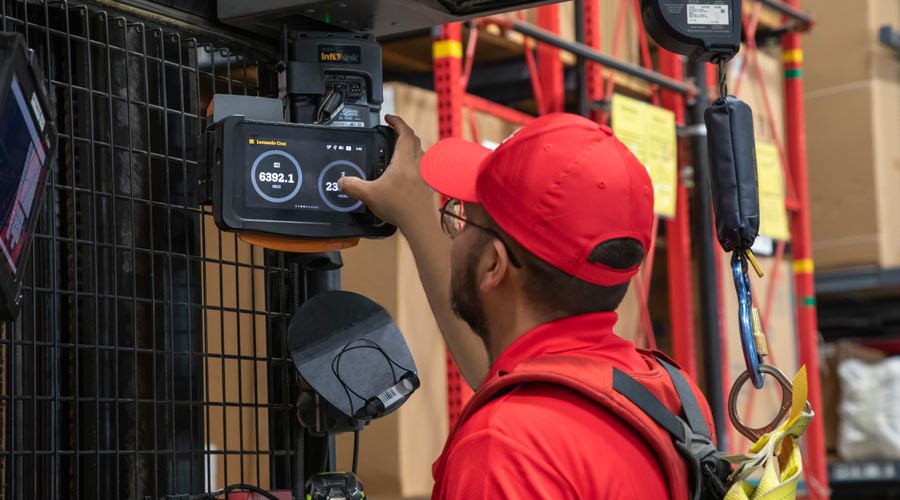Eight Proven Lessons for Implementing Warehouse Technology: Lessons 1-4

Whether you’re introducing your warehouse to forklift connectivity, operator-assist systems, automation or other technology, it’s essential to get buy-in from both your leadership team and associates on the floor. Although today’s workers value technology that keeps them safe and relieves them of repetitive or strenuous tasks, implementation may require changing familiar processes, revisiting old habits, or adhering to new expectations.
Over the years, Crown has assisted with many successful technological deployments. During that time, we’ve identified eight best practices that help these implementations run more smoothly while producing the expected results.
This blog is the first in a two-part series that explores these proven steps. They work because they help those involved to understand the potential value of new technologies while reducing frustration, unfounded fear and other risks often associated with change.
1. Consider the Outcomes
Put yourself in the position of the people most affected by the new technology. What will you be asking them to change? How much effort will that change require? Could the new system create real (or imagined) limits on their productivity or perceived autonomy? Knowing the answers to these questions up front will help you prepare for potential employee reactions later.
In addition to your internal considerations, also think about potential suppliers and solutions. While third-party offerings can appear to be potential solutions, those provided by forklift OEMs may perform more reliably and efficiently — with better overall integration — delivering performance advantages and better long-term value.
For example, some third-party object detection systems can scan a fixed area and provide visual and/or audio alerts, but Crown’s object detection solutions integrate with a lift truck’s operating system, allowing them to dynamically adjust sensor detection zones in response to the lift truck’s speed and steering angle.
2. Communicate With Your Team
Give your employees plenty of notice when a new system is being investigated and build in ample time to answer their questions and address their concerns. Transparency and early communication can foster their engagement, helping to accelerate the return on investment (ROI).
It often helps for someone in authority to distribute a one-page summary to share expectations and, more importantly, explain how the technology can benefit employees. For example:
- Forklift connectivity can improve efficiency by digitizing pre-shift forklift inspections and enhance safety by controlling equipment access and monitoring lift truck operation.
- Automation can enhance overall productivity and introduce workers to new employment opportunities and higher-value tasks.
- Object-detection features such as Crown’s ProximityAssist System, can reinforce operator training and help build confidence, especially with operators who are less experienced.
3. Plan Collaboratively
Involving company leadership and other stakeholders early on will help you deploy the new technology in a way that respects current norms and addresses potential frustration. Employees in areas that can be affected should have opportunities to provide feedback and advice. You’ll also want to work collaboratively to establish key performance indicators (KPIs) you’ll use to measure success.
Another practice that regularly improves short- and long-term outcomes is to create a training plan designed to share the right information with the right users at the right time. It should also include opportunities for your trainers to observe and provide real-time coaching as operators begin using the system.
4. Provide Hands-On Training
Gaining early buy-in from your most seasoned operators may enable you to leverage those with extensive real-world experience to help workers learn and evaluate a new technology. Videos and classroom instruction should help your team understand basic concepts but get them working directly with the new technology as soon as possible. In some cases, virtual reality can be used to supplement hands-on training.
You won’t want to overwhelm your team. For best results, share details and expectations incrementally, then provide trainees the opportunity to demonstrate the new capability to confirm their understanding. You may also enhance the training process by dividing your teams into functional areas of responsibility and providing training specific to their responsibilities.
Once initial training is complete, your trainers should follow up with employees and managers in affected areas several times after the system is deployed to ensure desired gains are being made. Follow-up intervals will depend on the application, the complexity of the new system or process and the experience level of the trainees.
Explore Insights 5–8 in Part 2
Part 2 of this series will cover four additional insights for successful deployments, including engaging your team in the process, acceptance and adoption, monitoring the system to maintain momentum and iterating based on your experience. Watch for this new post in two weeks.